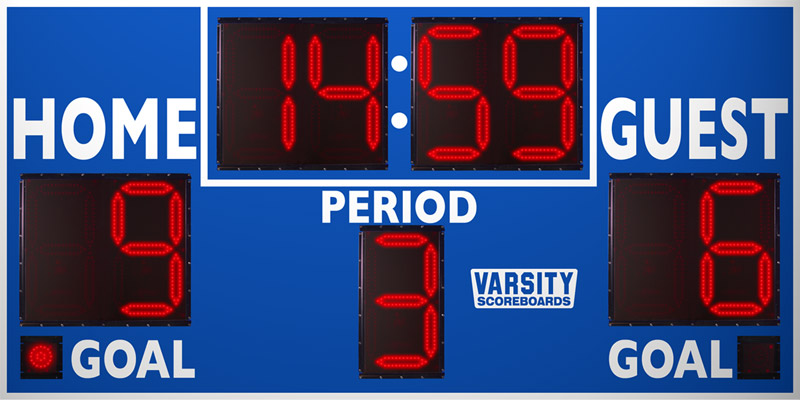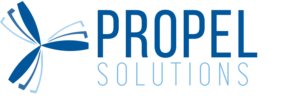In our last issue, we talked about how to implement Process Metrics in your department. Now that you have identified the KPI’s to measure customer value, how are you going to communicate the results? And how frequently are you going to carry out these actions?
It’s great that you have results, but how will you ensure that the results tie back to the objectives set by the organization? And how will you know what those objectives are? Having an effective toolkit is essential to your Performance Metrics.
In this issue we discuss four tools to visibly manage your metrics:
- Operating Report
- Variance Log
- Team Huddles
- Visibility Board
Operating Report
The more frequently you evaluate your operations, the more chances you have of staying on course to achieving targets. While monthly reporting gives you 12 chances to redirect, daily reporting gives you 252 chances a year to redirect, discover opportunities to increase productivity and implement continuous improvement initiatives to meet your strategic objectives.
Both actions may take the form of a daily or weekly update or report, a dashboard, a daily or weekly huddle with management, or any other format that maintains constant visibility on organizational performance. This provides decision makers with the information they need to make changes immediately when gaps or unexpected trends are identified.
A sample Operating Report is provided below:
| Metric | Target | Actual Day 1 | Variance Day 1 | Actual Day 2 | Variance Day 2 | Actual Day 3 | Variance Day 3 | Actual Day 4 |
| Service Measure 1 (%) | 100% | 96% | -4% | |||||
| Service Measure 2 (Qty) | 2 | 2 | 0 | |||||
| Quality Measure 1 (%) | 97% | 95% | -2% | |||||
| Quality Measure 2 (Qty) | 0 | 1 | +1 | |||||
| Speed Measure 1 (% complete) | 98% | 99% | +1% | |||||
| Speed Measure 2 (Qty/hr.) | 8 | 7 | -1 | |||||
| Resource Measure 1 (%) | 97% | 99% | +2% | |||||
| Resource Measure 2 (Qty) | 5 | 7 | +2 |
Operating Reports act as an organizational “scoreboard” similar to scoreboards at sport stadiums. They serve an important communication and signalling purpose because they are a visual way to provide transparency on performance through important metrics. Make sure that your Operating Report is accessible to the team to encourage performance.
Variance Log
Operation Reports serve to identify road bumps in the process of pursuing targets. Tracking variances is key to identifying causal trends and creating solutions. For example, by tracking variances in service times, you’ll be able to steer your team back on course to targets by adjusting the schedule to assign more or less team members to particular service areas to adapt to the dynamic demands at the time.
The Variance Log is a visibility tool that should capture all the variances to your metrics, as well as their cause.Using this tool allows you to assign the responsibility of installing the countermeasure to one of your team members, as well as an expected completion date. Variances can be handled one at a time until your team is comfortable with changes. When your team begins to buy into the changes and how it will improve their working conditions, you can begin to resolve variances a few at a time.
A sample Variance Log is provided below:
| Variance | Impact | Cause | Action Taken | Responsibility | Issue Date | Due Date | |||
| Service variance 1 | Delay in task delivery expected to incur X to project cost | Variance to service level occurred because… | Add additional resources to this task | Employee initial | Oct 24, 2018 | Nov 24, 2018 | |||
| Resource Variance 1 | Delay in task delivery expected to incur X delay to project | Variance to resources occurred because… | Add additional resources to this task | Employee initial | Oct 30, 2018 | Nov 15, 2018 | |||
| Resource Variance 2 | Delay in task delivery expected to incur X delay to project | Variance to resources occurred because… | Input exceeded expected volume because… | Employee initial | Oct 30, 2018 | Jan 15, 2018 | |||
Team Huddles
Communication can be one of the biggest operating problems in a department and shouldn’t be overlooked. Holding team huddles with your team will greatly increase the communication throughout the team, resulting in increased productivity.
Team huddles ensure that all team members are on the same page with current activities and schedules so there are no misunderstandings in the department. Team huddles should ideally be held daily, but depending on the department or project, may be more appropriate on a less frequent basis.
Team huddles should be quick 15-minute meetings at the beginning or end of the day with the whole team, whenever possible.
The format of the team huddles should stay consistent and should address:
- Results of the day from your target
- How did your previous schedule and expected activity completion go?
- Schedule and activities to complete before the next huddle
- Roadblocks to completing your expected activities
- Any questions or concerns with your schedule or activity list
Issues from the team should be quickly resolved; if any issues are not simple to resolve, a time should be scheduled with the manager later to resolve the issue.
Visibility Board
The visibility board is used by managers to communicate service standard levels and results, actions, upcoming activities, and quick wins. The visibility boards provide transparency to staff of the process performance metrics in the departments and how the team is performing. It supports managers and supervisors to communicate the focus for the day and assists with identifying roadblocks to completing work.
Two key areas for the visibility board will be communicating to the team the results from the previous reporting period. The results for all the PPM results will be posted at selected frequencies and will be shown against the target metric. For areas where the target was not met, action items can be listed for the department to try to problem solve how to counteract the roadblock to the team.
The second key area for the visibility board is to communicate to the team the expected schedule as well as the expected results. Any notes that should be communicated to the team should also be included on the visibility board, this may include staff away sick or on vacation. Additionally, any ongoing process improvements that may be affecting the department should be left up until they are completed.
A sample Visibility Board is provided below:
Questions? Contact Us
If you want to learn how to instill a culture of Continuous Improvement within your organization contact us at Propel Solutions today. We specialize in creating high performing teams and have a proven track record of powerful results.









